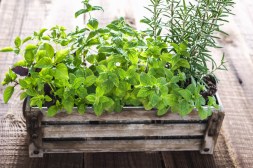Foraging Adventures Unveiled: Tips for Savoring Wild Ingredients Near You
Are you ready to embark on a culinary adventure right in your own backyard? Foraging has become a popular way to connect with nature while discovering unique, local flavors that are often overlooked. In this article, we’ll explore how to safely forage wild ingredients and incorporate them into your meals, making the most of what nature has to offer.
Understanding Foraging Basics
Foraging involves searching for and gathering wild food resources. This practice not only allows you to experience fresh, organic ingredients but also helps deepen your connection with the environment. Before heading out on your foraging adventure, it’s essential to familiarize yourself with local flora and fauna. Take time to learn which plants are edible and which might be toxic. Resources such as field guides or apps can provide valuable information about safe foraging practices.

Essential Tools for Foraging
To make the most of your foraging trips, you’ll need a few basic tools. A good pair of gloves can protect your hands from thorns or irritants while gathering herbs and berries. A sharp knife or scissors is useful for cutting herbs at the base without uprooting them completely. Additionally, carrying a basket or cloth bag will help keep your finds fresh until you get home. Don’t forget a notebook to jot down interesting discoveries and locations where you’ve found edible plants.
Finding Local Flavors: Where to Forage
The best places to forage often include parks, forests, trails, and even urban areas where wild plants thrive. Consider starting in local state parks or nature reserves that allow foragers access while ensuring sustainable practices are followed. Look around water sources like streams or ponds; many delicious edibles grow near these areas. Remember always to check local regulations regarding foraging in different areas before you start collecting.
Seasonal Forage Finds
Different seasons bring various edible treasures from the wilderness. In springtime, look out for tender greens like dandelion leaves and wild garlic; summer is perfect for berries such as blackberries or raspberries; autumn offers mushrooms like chanterelles; and winter may reveal roots such as burdock that can be harvested after frost sets in. Research seasonal availability in your area so that each outing yields something delicious.
Cooking with Wild Ingredients: Delicious Recipes
Once you’ve gathered some wild edibles, it’s time to enjoy them. Incorporating these flavors into dishes can elevate an ordinary meal into something extraordinary. Try using wild greens in salads or pesto sauce; add berries into smoothies or desserts; sauté mushrooms with garlic as a side dish; create herbal teas from freshly picked leaves—there’s no end to what you can do. Experimentation is key when it comes to cooking with new ingredients—you might discover delightful flavor combinations along the way.
Foraging adventures offer not just an opportunity to savor unique flavors but also an enriching experience that connects us deeply with nature’s bounty around us. Remember always prioritize safety by identifying plants correctly before consumption—happy hunting.
This text was generated using a large language model, and select text has been reviewed and moderated for purposes such as readability.











